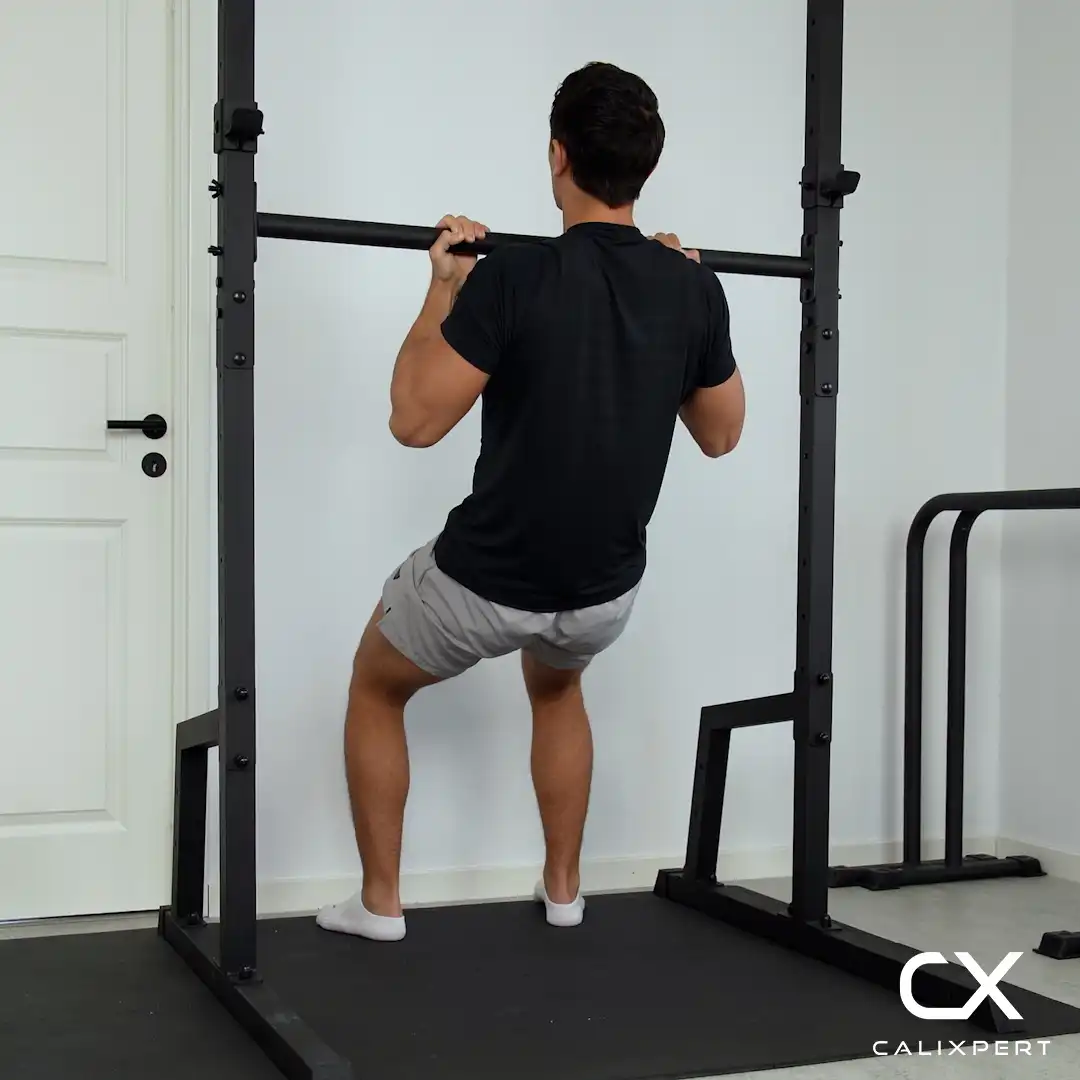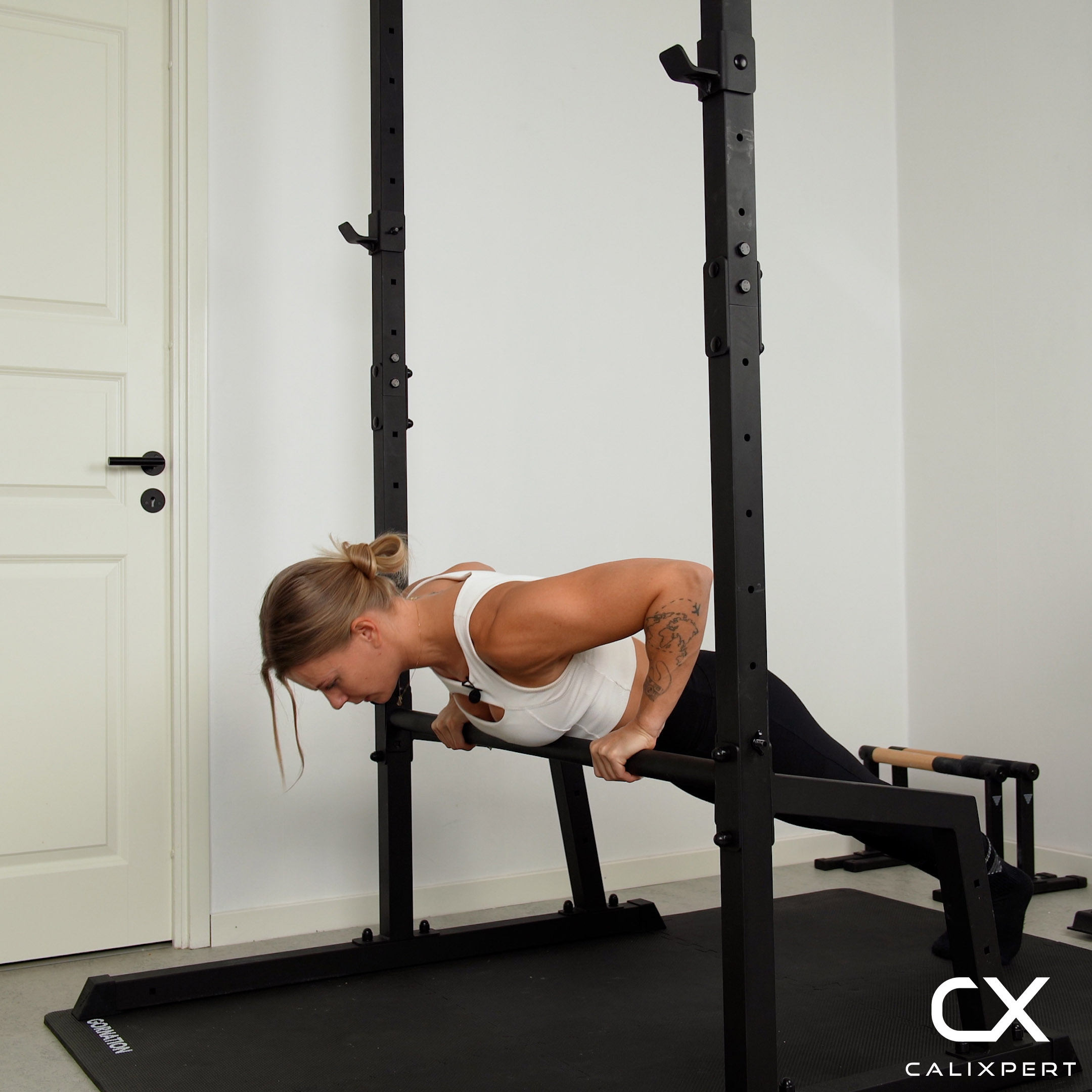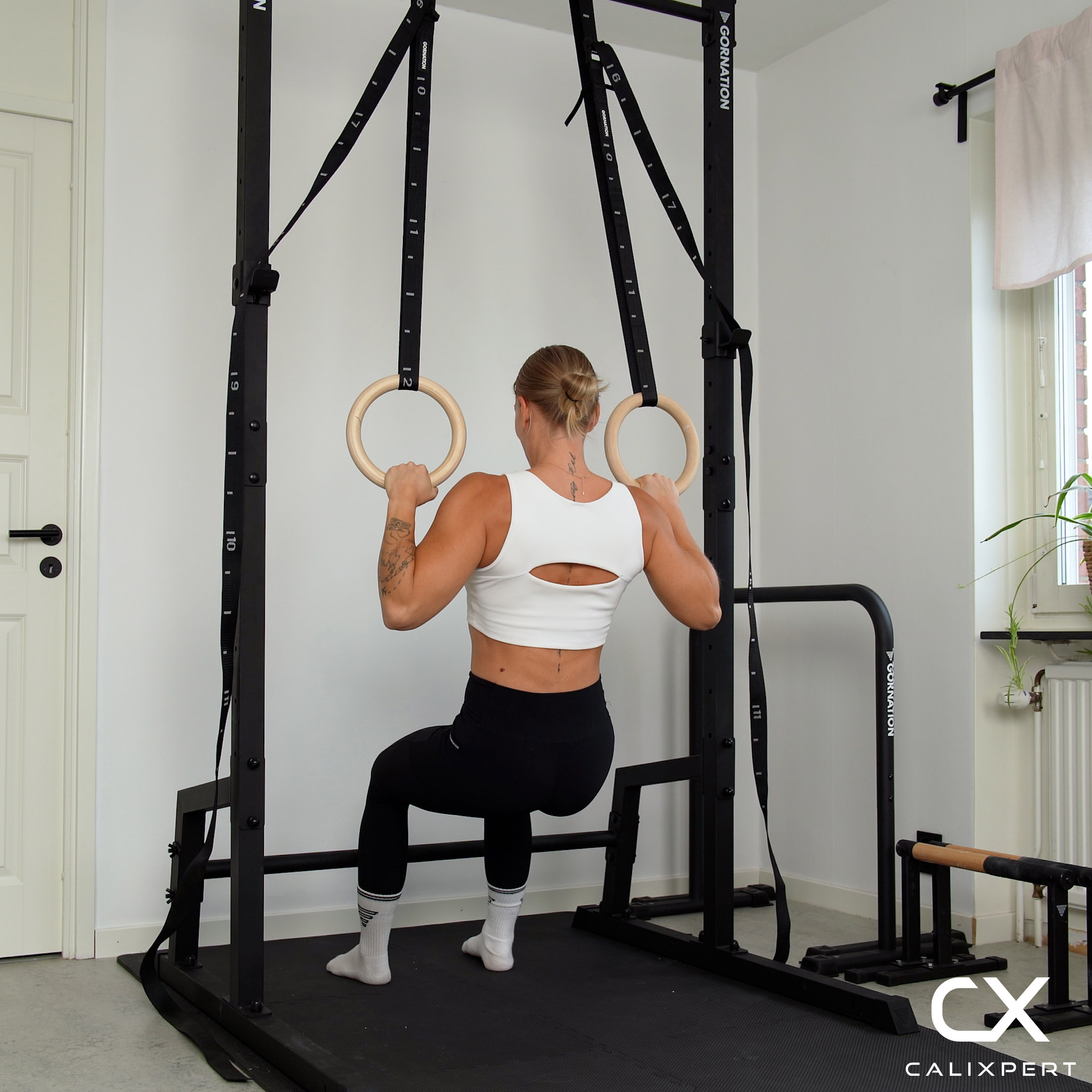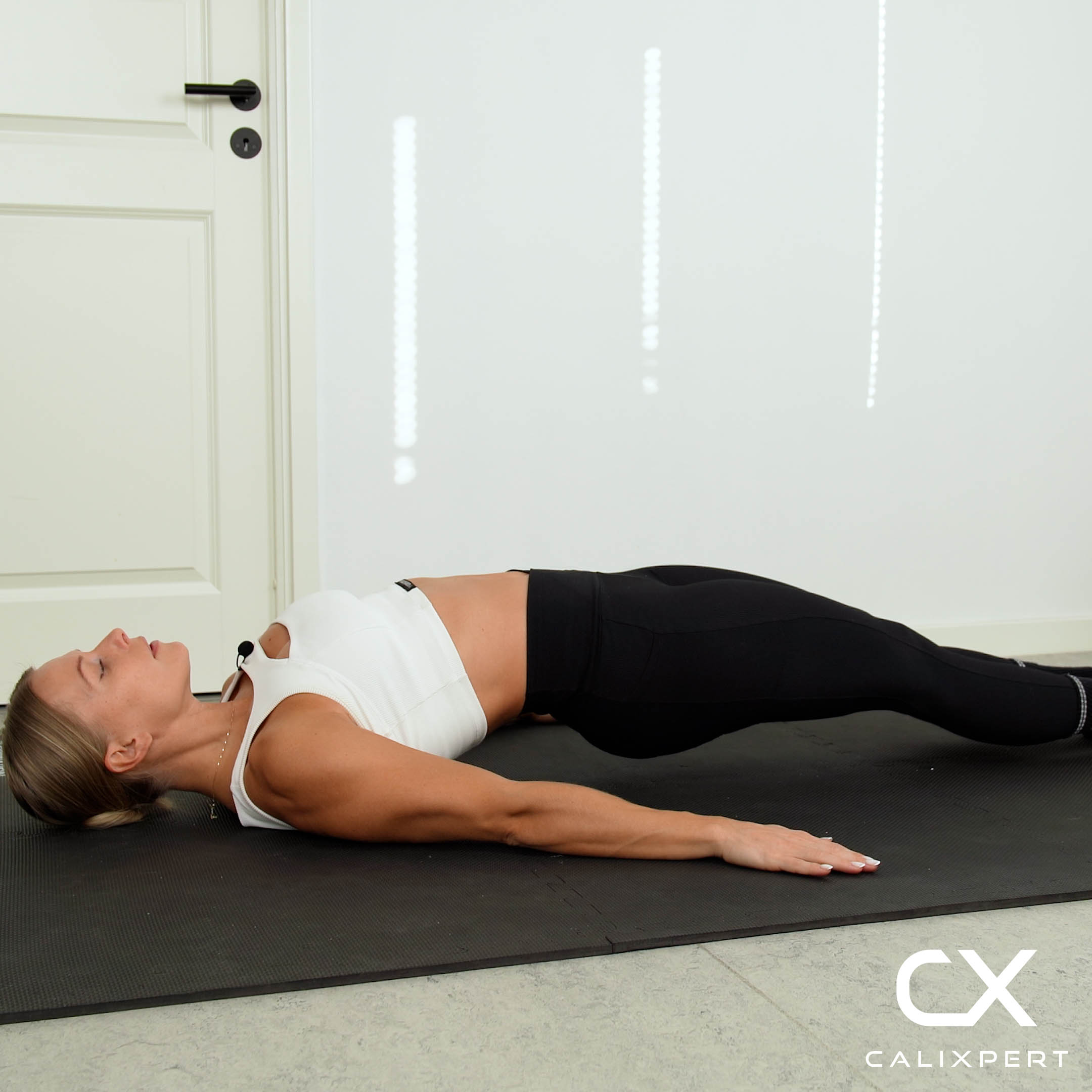Knowing how to do push-ups unlocks one of the most effective and accessible bodyweight exercises, requiring nothing but the floor and your body. They work multiple muscle groups at once, including the chest, shoulders, triceps, and core, making them a staple in strength training and endurance workouts alike.
How To Do Push-ups
Here’s a quick explanation before diving into the steps. To do one, place your hands slightly wider than your shoulders, keep your body straight, and engage your core. Lower yourself by bending your elbows until your chest is just above the floor, then push back up until your arms are straight. Keep your movements slow and controlled, then repeat. Now, let’s break it down step by step.
Step By Step Guide to Properly Execute Push-ups
1. Starting Position
- Place your hands slightly wider than shoulder-width apart, fingers spread for balance.
- Keep your body in a straight line from head to heels—engage your core and squeeze your glutes.
- Look slightly ahead to keep your neck neutral.
2. Lower Yourself
- Keep your legs straight and avoid bending your knees.
- Bend your elbows slowly, keeping them at about a 45-degree angle from your torso.
- Lower your chest until it's just above the floor, forming a 90-degree angle with your arms.
- Keep your core tight to prevent your lower back from sagging.
3. Push Back Up
- Press through your hands to lift your body while keeping your core engaged.
- Straighten your arms fully but don’t lock your elbows.
- Reset at the top before starting the next rep.
Proper Push-Up Form Checklist (Quick Reference Guide)
- Body stays in a straight line from head to heels
- Hands placed slightly wider than shoulder-width
- Core engaged and glutes tightened
- Elbows at ~45° angle (not flared out)
- Lower until chest nearly touches the ground
- Push back up in a controlled motion

Common Push-Up Mistakes To Avoid
Avoiding common push-up mistakes is key to building strength safely and getting the most out of your workout. Poor form can lead to injuries, strain on your joints, and reduced effectiveness, making it harder to see progress.
- Sagging Hips – Often caused by a weak core. Fix it by engaging your abs and squeezing your glutes throughout the movement.
- Flaring Elbows – Placing elbows too wide can strain your shoulders. Keep them at a 45-degree angle from your torso.
- Not Going Low Enough – Half-reps limit muscle activation. Lower your chest just above the ground before pushing back up.
- Neck Misalignment – Looking too far up or down strains your spine. Keep your gaze slightly forward with a neutral neck.
How to do push-ups for beginners
Push-ups can feel difficult for beginners, but this challenge is not a sign of weakness—it's simply a lack of specific strength and coordination. Unlike machines at the gym that guide movement, push-ups require full-body control, balance, and muscle engagement without external support.
If you find yourself unable to do a full push-up, don't get discouraged. Strength and endurance develop over time, and with a structured approach, you can progress from modified variations to full push-ups. Following our step-by-step progression will help you build strength, improve form, and gain confidence in your ability to perform push-ups correctly.
Beginner-Friendly Push-Up Progressions
If you can’t do a full push-up yet, follow this structured progression to build strength gradually, use the right exercises for your level.
Wall Push-Ups
- Stand facing a wall, hands at shoulder height and slightly wider than shoulders.
- Lean forward and lower your chest toward the wall, then push back.
- Perform 3 sets of 12-15 reps before moving to the next step.
Knee Push-Ups
- Start in a push-up position but keep knees on the ground.
- Lower your chest while keeping a straight body from knees to shoulders.
- Perform 3 sets of 8-10 reps before attempting Incline pushups.
If you want to dive deeper on how to do knee push ups check out our guide
Incline Push-Ups
- Place hands on an elevated surface such as a bench or table, start with a hip height incline push up.
- Lower your chest towards the surface(chair, table, bar) and push back up.
- Start with lower sets and reps like 2-3 sets of 2-6 reps. Once you reach 3 sets of 10 reps you can progress further.
If you want to dive deeper on how to do incline push ups ups check out our guide
Negative Push-Ups
- Start in a standard push-up position with hands slightly wider than shoulder-width.
- Lower your chest to the floor as slowly as possible, keeping your body straight and core engaged.
- Once at the bottom, reset by returning to the starting position (use your knees if needed).
- Perform 3 sets of 6-8 reps before progressing to assisted push ups.
If you want to dive deeper on how to do negative push ups ups check out our guide
Assisted Push-Ups
- Attach a resistance band to a sturdy overhead bar and loop it around your torso just below the chest.
- Get into a push-up position with hands slightly wider than shoulder-width, keeping your body in a straight line.
- Lower your chest toward the floor while maintaining control, then push back up.
- Perform 3 sets of 8-10 reps before progressing to full push-ups or using a lighter band.
If you want to dive deeper on how to do assisted push ups ups check out our guide
Full Push-Ups
Engage the core and glutes, lower yourself in a controlled manner, and push up. Like mention in this guide above.

Why Beginners Struggle with Push-Ups
Many beginners struggle with push-ups due to insufficient upper body strength, especially in the chest, shoulders, and triceps, which are the primary muscles involved. Additionally, a weak core can make it hard to maintain a stable plank position, causing the lower back to sag or the hips to lift too high.
Another common issue is incorrect technique, which makes push-ups feel harder than they should be. Hand placement, elbow positioning, and breathing all play a role in executing a smooth, effective push-up.
- Weak Chest and Arm Muscles
- Poor Core Stability
- Incorrect Form
Push-Up Variations & Their Benefits
Once you’ve mastered standard push-ups, variations can help target different muscles, improve strength, and add variety to your routine. Changing hand placement, tempo, and range of motion makes push-ups more effective for different fitness goals.
Intermediate to Advanced Push-Up Variations
Diamond Push-Ups
Hands placed close together under the chest, shifting the load to the triceps.
Wide-Arm Push-Ups
Hands positioned wider than shoulders, emphasizing chest engagement.
Archer Push-Ups
One arm extends outward while the other bends, focusing on unilateral strength.
Clapping Push-Ups
Push explosively off the ground and clap hands before landing.
One-Arm Push-Ups
One hand remains behind the back, requiring significant strength and stability.
Each of these variations focus on different aspects of push-up performance, whether it’s building endurance, explosive power, or muscle balance. Select variations based on your fitness goals and gradually increase difficulty as you progress.

How to Increase Push-Ups for Beginners
Improving your push-up strength and endurance takes consistency and smart training. Practicing push-ups regularly is key, but balancing effort with rest is just as important. Use pyramid sets (gradually increasing then decreasing reps) and progressive overload (adding more reps or difficulty over time) to build strength. Strengthen supporting muscles like your core, shoulders, and triceps to make push-ups easier. Boost endurance by slowing down each rep (time-under-tension training), which forces muscles to work harder.
Tracking Progress: Set weekly targets, log your reps, and track form with videos to identify weaknesses and improvements.
Effective Push-Up Methods to Increase Reps
With over 10 years in calisthenics and two world championship titles, I’ve learned exactly what it takes to increase push-up reps efficiently. As a calisthenics coach, I’ve helped athletes break plateaus and build endurance faster. Through my own training and experience, I’ll share the most effective methods to help you improve and see real progress.
EMOM Method (Every Minute on the Minute)
The EMOM (Every Minute on the Minute) method is an efficient way to build strength and endurance by spreading push-ups over time, helping your nervous system adapt to higher volume.
- Choose a push-up progression that suits your level (e.g., knee push-ups or incline push-ups if you're still building strength).
- Start with a 6-8 minute EMOM (each round lasts 1 minute).
- Every minute, do 3-6 reps and rest for the remaining time.
- Gradually extend the EMOM to 12 minutes before increasing difficulty (e.g., switching to regular push-ups).
To increase regular push-up reps, use the EMOM method in the same way. If you can do 5 push-ups, try doing 2-3 push-ups every minute for 6-8 minutes. Once you can maintain this for 12 minutes, increase reps per round.
This method allows you to accumulate a high number of push-ups in total, conditioning your muscles and nervous system to handle more reps over time.
GTG Method (Grease the Groove)
The GTG (Grease the Groove) method is another powerful way to increase push-up endurance without exhausting your muscles in one session. It works by training more frequently at sub-maximal effort, reinforcing the movement pattern.
- Do multiple sets throughout the day, but never to failure.
- Each set should be around 50% of your max reps (if your max is 10, do 5 per set).
- Space sets out over several hours (e.g., morning, midday, evening).
- Since you’re never fatiguing completely, you can train push-ups daily without overtraining.
GTG improves muscle memory, strength, and endurance, making push-ups feel easier over time. This method is great for increasing reps without adding long workouts.
How Many Push-Ups a Day to Build Muscle?
The number of push-ups you should do daily depends on your fitness level.
Progressive Overload for Muscle Growth: To see results, gradually increase your push-up volume, intensity, or resistance. Your muscles need new challenges to grow.
Rest & Recovery: Overtraining can slow progress and lead to injury. Allow muscles time to recover by scheduling rest days, stretching, and ensuring proper nutrition.
Final Thoughts & Next Steps
Mastering push-ups isn’t about how many reps you can do—it’s about progressing consistently, maintaining proper form, and building strength over time. Whether you're starting with wall push-ups or working toward advanced variations, the key is gradual improvement and staying consistent with your training.
Key Takeaways:
- Start where you are – Use progressions like wall or knee push-ups to build strength.
- Prioritize form over reps – A few well-executed push-ups are more beneficial than sloppy high-rep sets.
- Be consistent – Training push-ups three to four times a week will yield steady improvement.
- Challenge yourself – As you get stronger, try different variations to keep progressing.
Push-ups are one of the most effective exercises for upper body and core strength, and with the right approach, anyone can improve. Whether your goal is to hit your first proper push-up or increase your endurance, now is the time to start.
Next Steps
- Follow a beginner-friendly push-up system to build strength progressively.
- Get our Free Calisthenics Workout Plan to start Calisthenics
FAQ About Push-ups
The number of push-ups you should do daily depends on your fitness level and goals.
- Beginners: Start with 10-15 reps, focusing on good form.
- Intermediate: Aim for 20-50 reps per day, split into multiple sets.
- Advanced: Do 100+ reps, adding difficulty with weighted vests or harder variations.
Quality matters more than quantity. Gradually increase reps using methods like EMOM or GTG to build endurance and strength efficiently. Also, allow recovery days to avoid overtraining.
If you want to build a stronger chest with push-ups, try these variations that make your muscles work harder.
- Wide Push-Ups shift more of the work to your chest instead of your triceps.
- Ring Push-Ups make you control your balance, which forces your chest to work more.
- Weighted Push-Ups add extra resistance, helping you build strength faster.
- Deep Push-Ups use handles or platforms to let you lower your chest past your hands, giving your muscles a bigger stretch and more activation.
Mix these into your routine and keep challenging yourself to see real results.
Push-ups build strength in the chest, shoulders, triceps, and core while also improving endurance. They require no equipment, making them a simple yet effective exercise that can be done anywhere. Regular push-ups also support joint health by strengthening the muscles around the shoulders and wrists.
Yes, push-ups can effectively build chest muscle, especially for beginners and intermediate lifters. By using variations like wide push-ups, deep push-ups, and weighted push-ups, you can increase resistance and target the chest more effectively. To keep progressing, focus on increasing reps, adding difficulty, and using progressive overload to challenge your muscles over time.
Learn More About Push Ups
Why You Need to Learn Push-Ups
Push-ups are one of the best exercises you can learn because they build real, functional strength without needing any equipment. They hit your chest, shoulders, triceps, and core all at once, making them a full-body movement. Plus, they teach you body control and endurance, which helps in almost every other exercise. If you want to get stronger, move better, and improve your fitness fast, push-ups should be a key part of your training.
Why Push-Ups Are Easier Than Pull-Ups
Push-ups are more beginner-friendly than pull-ups because you are lifting less of your body weight. In a standard push-up, you support around 67% of your body weight since your feet stay on the ground. With pull-ups, you are lifting about 90% of your body weight because only your arms remain unweighted. Push-ups also allow your core and legs to assist with stability, making them easier to control. This is why push-ups are a great foundation for building strength before moving on to harder bodyweight exercises like pull-ups.








.webp)





































.webp)





















































